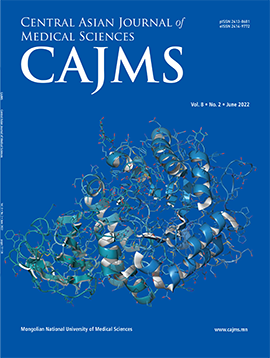Detection of Common Bacterial Causes of STIs among STD Clinic Attendees by Gram Stain and Culture versus the Microarray Nucleic Acid Hybridization Method
DOI:
https://doi.org/10.24079/cajms.2017.06.007Keywords:
Sexually Transmitted Diseases, Nucleic Acid Hybridization, MongoliaAbstract
Objectives: The purpose of the study was to determine the prevalence and etiology of predominant sexually transmitted infections (STIs) occurring among the STD and Gynecology Clinic attendees and to compare sensitivity and specificity of conventional versus molecular diagnostic methods. Methods: A total of 1,441 individuals were recruited from the STD clinic at the National Center for Communicable Diseases and Gynecology Clinic at the National Center for Oncology between 2014 and 2015. Urogenital tract swab samples were collected and tested for N.gonorrhoeae, C.trachomatis, and T.vaginalis using conventional (Gram stain and culture) and molecular (Microarray Nucleic Acid Hybridization - MNAHM) diagnostic methods. The final infection status of participants was determined using the “either test positive” strategy. Results: Of the total 1,441 participants, 19.7% were N.gonorrhoeae infected, 12.5% were C.trachomatis infected, and 7.8% were T.vaginalis infected. For T. vaginalis, conventional methods and MNAHM had sensitivities of 17.9% and 98.2%, with specificities of 96.6% and 99.6%, respectively. For N.gonorrhoeae, conventional methods had sensitivity and specificity values of 33.3% and 99.1%, and MNAHM had values of 95.1% and 98.8%, respectively. Conclusion: The study found a high prevalence of N.gonorrhoeae and C.trachomatis among STD and Gynecology Clinic attendees. Conventional methods for detection of N.gonorrhoeae and T.vaginalis were significantly less sensitive than molecular diagnostic methods and didn’t detect other STI pathogens.
Downloads
170
Downloads
Published
How to Cite
Issue
Section
License
Copyright (c) 2017 Mongolian National University of Medical Sciences

This work is licensed under a Creative Commons Attribution-NonCommercial 4.0 International License.




